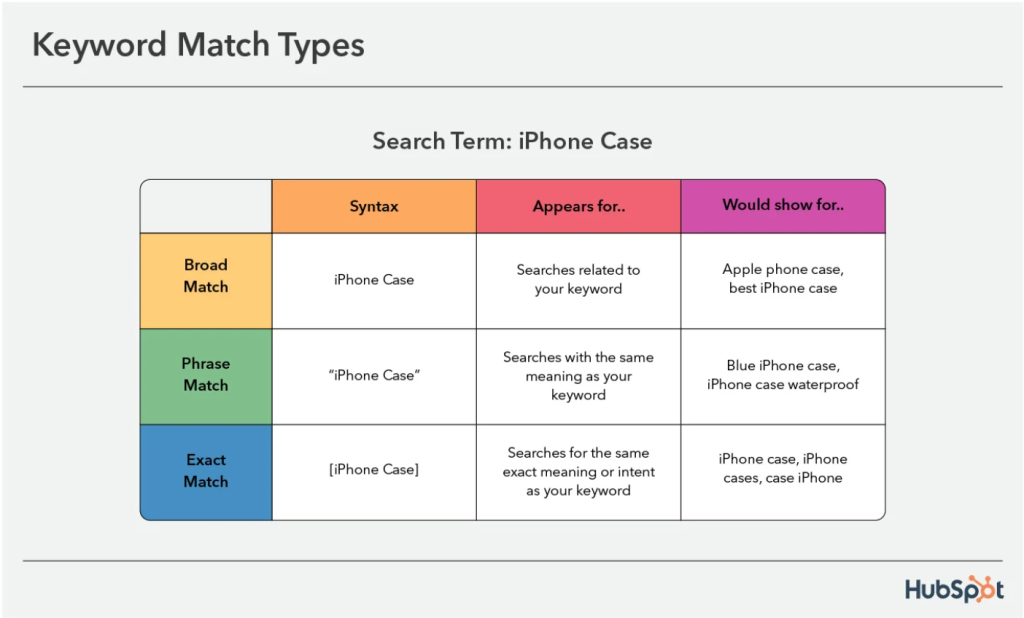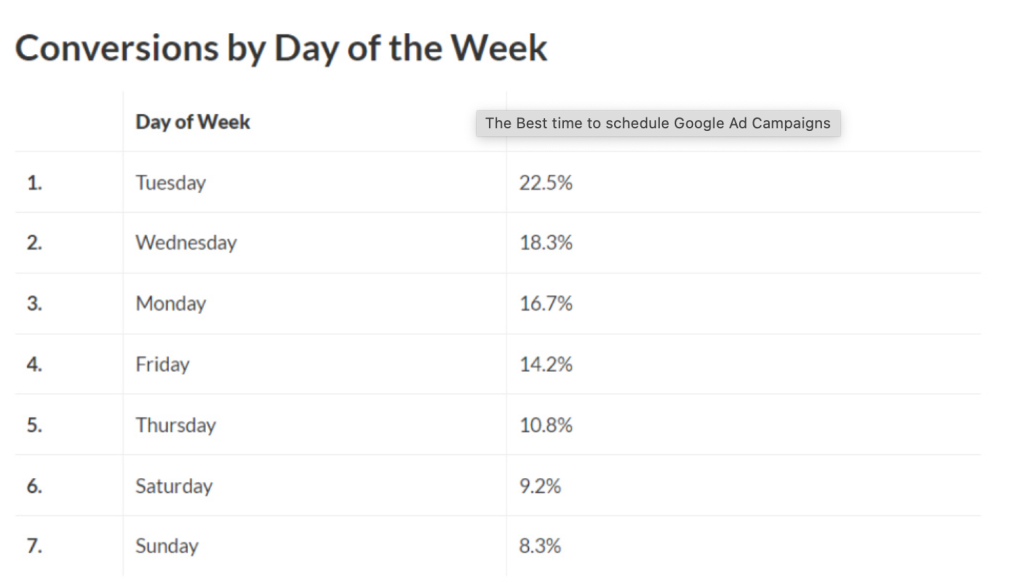Anyone running Google Ads knows the ultimate goal: seeing a positive return on your investment. That’s why optimising your ad campaigns isn’t just an option, it’s essential for success.
You might be wondering, ‘Sure, but can these tips really make a difference in my conversions?’
The short answer, yes they can.
Building a Google Ads campaign that not only grabs attention but also turns leads into paying customers requires more than just a catchy headline, it demands a strategic approach.
Today, we will be sharing our top 5 tips you can use to optimise your ad campaign and boost your conversion rates. These tips are practical, straightforward, and designed to help you fine-tune your advertising strategy for the best possible results.
Here’s a breakdown of the tips we’ll be discussing, as a Google Ads PPC Agency in Leeds:
- Effectively Choose, Group, and Organise Your Keywords
- Implement Retargeting Ad Campaigns
- Optimise Ad Delivery by Time, Device, and Location
- Utilise Ad Extensions
- Improve Landing Page Experience
- How can we help?
Effectively Choose, Group, and Organise Your Keywords
Selecting the right keywords is the foundation of any successful Google Ads campaign. Start by conducting thorough keyword research to identify terms that are not only relevant to your products or services but also have a high intent of conversion.
You need to understand the different types of keyword match types that Google Ad campaigns use.
When it comes to running successful Google Ads campaigns, understanding the different types of keywords is a game-changer. Google gives you three main keyword match types: Broad Match, Phrase Match, and Exact Match, and trust me, knowing how to use them can make or break your campaign.
- Broad Match: The search query must relate to your keyword.
Broad match means your ads can show when searchers use related keywords. It provides the widest reach of any keyword match type.
Google recommends that you use broad match keywords in conjunction with smart bidding to “help reach searches that are relevant to your business and expected to perform within your goals”. - Phrase Match: The search query must include your keywords meaning.
Phrase match means your ads can show when queries include the meaning of your keyword. This keyword match provides a middle ground between reach and relevance.
Phrase match keywords are great for brand and competitor campaigns because they ensure that searches specifically reference your brand name or a competitor’s. - Exact Match: The search query must match your keywords meaning.
Exact match means your ads can only show when queries have the same meaning as your keyword.
An example of using these 3 keyword match types

Image source: HubSpot Keyword Match Types
Mastering these keyword types is key to controlling when and where your ads show up, ensuring you’re reaching the right people at the right time.
If you need help with optimising your ads, Semrush has a SEO writing assistant tool which makes your copy more SEO-friendly, improves readability and engagement, maintains a consistent tone of voice and checks your copy for plagiarism.
Implement Retargeting Ad Campaigns
If you’re not implementing retargeting ad campaigns, you’re leaving money on the table. Retargeting is all about reaching out to those who’ve already shown interest in your brand but didn’t quite take the plunge. Maybe they visited your website, checked out a product, or even added something to their cart but left without completing the purchase.
That’s where retargeting comes in.
- Retargeting
Focuses on specific actions users have taken on your site, like visiting a particular product page or abandoning a cart. These ads are highly personalised and designed to bring those warm leads back to your site to complete their purchase.
Data is collected through cookies and used in your paid ads to re-engage past visitors, guiding them back to your site with the goal of driving conversions. - Remarketing
This involves showing ads to users who’ve previously visited your site. It’s a powerful way to re-engage past visitors and keep your brand fresh in their minds as they browse other sites.
Data collected through a contact form is used in your emails, SMS, and messaging to engage with existing customers, driving repeat sales and boosting their lifetime value.
By showing tailored ads to users who’ve already interacted with your site, you can significantly boost your chances of turning those almost-customers into loyal buyers. It’s a smart, cost-effective way to maximise your ad spend and keep your brand in the spotlight until they’re ready to make a move.
Optimise Ad Delivery by Time, Device, and Location
Leverage the power of ad scheduling to ensure your ads are shown at the times when your target audience is most active and likely to convert. Analyse your campaign data to identify peak performance hours and adjust your bid strategy accordingly.
Additionally, consider the device preferences of your audience.
With mobile usage continually on the rise, ensure your campaigns are optimised for mobile devices with responsive ad formats and mobile-friendly landing pages.
Google Ads can be costly due to high CPC (cost per click). By optimising your ad timing to target when potential visitors are most likely to convert, you can lower your CPA (cost per acquisition) and get more value from your campaign budget.

Image source: Zahava Legal Marketing
Geo-Target Strategically
Geo-targeting lets you focus your ads on specific locations, ensuring they reach the right audience. By prioritising high-value areas and adjusting bids based on performance, you can optimise your budget and boost conversions effectively.
Tailor Delivery by Device
Customise your ad delivery based on the device your audience is using. By optimising ads for mobile, desktop, or tablet users, you can enhance user experience and improve conversion rates. Adjust your bids and ad formats to match device preferences and ensure your ads are effective across all platforms.
Utilise Ad Extensions
Ad extensions expand your ad with additional information, giving potential customers more reasons to choose your business. By incorporating extensions such as sitelinks, callouts, and structured snippets, you can provide users with valuable insights about your products or services without cluttering your core ad message.
A reason why you should incorporate these into your campaigns is that they are free to add to PPC ads and do not cost anything extra to use. Using ad extensions in PPC ads can provide numerous benefits including increased visibility, more information, better user experience, increased click-through rates, cost-effectiveness, better targeting and a competitive advantage.

Improve Landing Page Experience
Your ad’s job is to get the click, but your landing page’s job is to secure the conversion. Ensure that your landing pages are optimised for conversions by maintaining a clear and consistent message between the ad and the landing page content.
Utilise a clean, intuitive design with strong CTAs and make sure your pages load quickly to reduce bounce rates.
A/B testing different elements of your landing pages can lead to significant improvements in conversion rates. Test variations of headlines, images, CTA buttons, and even page layouts to determine what combination works best for your target audience.
Continuously refining the user experience on your landing pages not only helps with conversions but can also improve your Quality Score in Google Ads.
How can we help?

Our PPC agency in Leeds helps you choose the best type of ad for your business to get great results. With our help, your company can achieve success quickly. Our team continuously reviews and improves ads to ensure they are effective and utilising the budget to its full potential. We use A/B testing to refine everything from the ad copy to landing pages and call-to-actions. This helps increase conversion rates and create more engaging interactions with your users.
Ready to open new possibilities?
Contact us to explore how our expertise in Google Ads PPC can help you grow your business.


